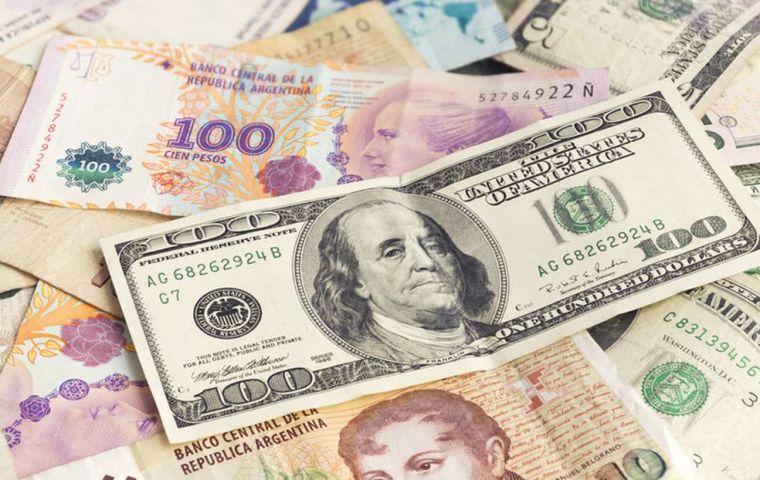MercoPress. South Atlantic News Agency
Argentina creates differential exchange rate for foreign travelers
 Argentina is planning to further diversify its already prolific assortment of exchange rates between the local peso and the US dollar
Argentina is planning to further diversify its already prolific assortment of exchange rates between the local peso and the US dollar Argentina's monetary authorities Thursday launched an initiative whereby foreign tourists may sell up to US$ 5,000 through official banking channels at a rate as close as possible to the so-called “blue” dollar.
The move seeks to get that foreign currency run through the country's monetary cycle, thus adding to the Treasury's evaporating reserves.
Argentina's foreign currency exchange market reflects the financial fragility the administration of President Alberto Fernández is going through, as calls for his resignation are already mounting.
Tourism Minister Matías Lammens announced the new monetary scheme for foreign travelers to have access to a differential exchange rate“ through credit cards or otherwise.
In Argentina, there are various exchange rates to add to the confusion of the rank and file who find it harder every day to make ends meet.
The MEP dollar, for instance, is obtained by buying assets that are quoted both in pesos and dollars, which are paid in pesos when they are acquired and sold in dollars in the Argentine stock market. And the ”contado con liquidación” (cash with liquidation) consists of buying shares or bonds locally with Argentine pesos and selling them in dollars on Wall Street.
Due to the exchange rate gap, foreign tourists sell their dollars (or euros) at the informal exchange rate. But “we need to strengthen the Central Bank's reserves,” he added, pointing out that “tourism is one of the main generators of foreign currency for Argentina,” Lammens explained.
The Economy Ministry under Silvina Batakis' new leadership is now reported to be working on a scheme to compensate exporters, who have no option but to liquidate their sales through state-recognized banks and get paid significantly less.
Hence, an agrifood producer, for instance, would get around AR$ $136,32 for each “incoming” dollar, which was Thursday's closing rate. But after that comes the infamous “income” tax, together with the export tax. It would be fair to say that an Argentine exporter gets less than AR$ 100 on the dollar. In addition to that, the same producers need to buy dollars at a much higher rate to import fertilizers and other inputs.
On the other hand, transactions through unofficial channels yield AR$ 337 per dollar, according to Thursday's closing rate (it had reached AR$ 338 at some point).
In that scenario, corrections are badly needed in a context where producers reportedly smuggle part of their shipments abroad (mostly to Paraguay) from where they are sold into international markets.
Other producers are also said to be waiting for a more convenient time to liquidate their dollars stemming for example from soybean exports, while the Government badly needs every penny it can get hold of ahead of September's maturities worth more than US$ 4.9 billion with the International Monetary Fund (IMF).
Hence, according to El Cronista, the Batakis team is working on something along the lines of an “agro-export dollar,” which would be between 30% and 40% above the official rate.
In this straining scenario, cutting down export taxes was never on the table, El Cronista also reported.




Top Comments
Disclaimer & comment rulesCommenting for this story is now closed.
If you have a Facebook account, become a fan and comment on our Facebook Page!